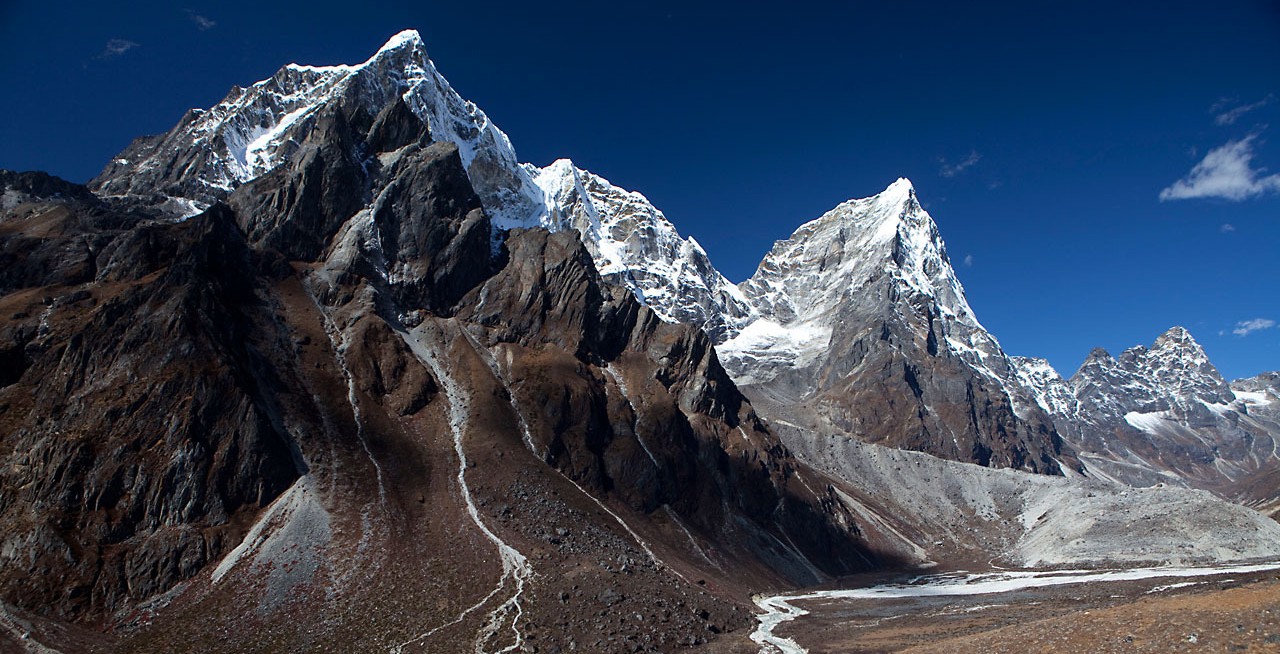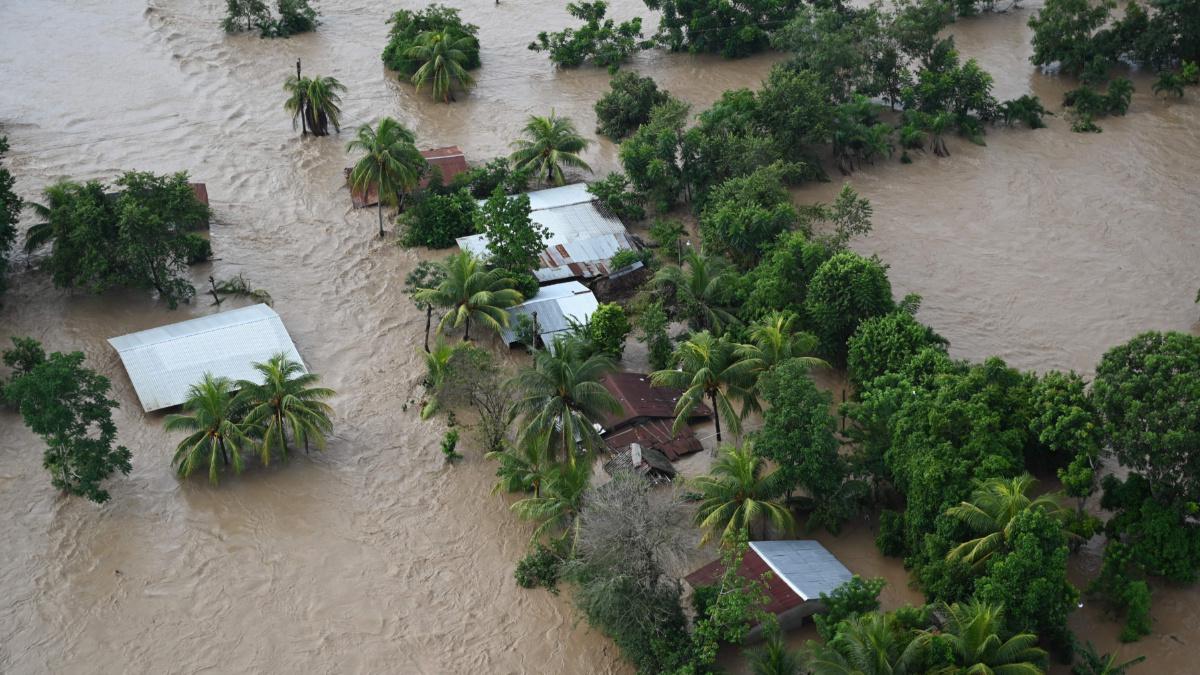Communication is key to unlock scientific interventions in climate sensitive areas
Clear communication with the targeted community, or the lack of it, can make or break interventions such as early flood warning systems, say experts
By Editorial Team / Jul 25, 2022

Image Source: WWF
In late 1990s, a lake outburst flood hazard became a serious concern at the largest moraine-dammed glacial lake in Nepal, the Tsho Rolpa glacial lake, located about 110 km north-east of capital Kathmandu.
The lake had been increasing in size since the 1950s. Due to its topology, location, and communities and ecosystem dependent on it, an outburst would have had disastrous wide-scale impacts.
To prevent such a disaster, the Department of Hydrology and Meteorology, Nepal received a grant of $1 million from the World Bank to set up a sophisticated early warning system, which was then installed by a private company from the United States.
Soon enough, a high-tech early warning system, spread over 19 stations, was in place. Apart from a VHF radio technology, a meteor burst master station was set up to transmit radio signals to over 1,000 miles.
Surprisingly, only a few months later, parts of the life-saving warning system started disappearing. The solar panels were first to go, then batteries, and so on.
“For villages downstream, we realised the warning system was just a strange looking pole. Those who lived upstream at least knew that there’s a lake and the flood risks that came with it. Residents downstream never saw the lake and were unaware about the threats it posed and they weren’t educated about the same even during system installation,” says Arun Bhakta Shrestha, Regional Programme Manager, River Basins and Cryosphere, The International Centre for Integrated Mountain Development (ICIMOD), Nepal.
A communication gap between the targeted community and the implementers was at the heart of the failure of a high tech, robust and expensive intervention.
The village residents felt that the solar panel of that “seemingly odd pole”, that never sounded any alarm anyway, better belonged to their households with limited electricity connection.
While the lake outburst was avoided by using a lake lowering mechanism, the million-dollar early warning infrastructure was dismantled bit by bit.
“In such cases, even if there is no time during the installation, engagement with the community can happen before or after to educate them about the need of the system, the importance of maintaining it, which kind of alarm means what, etc.” says Shrestha.
Be inclusive from the start, understand community’s perception
To avoid failures like the Tsho Rolpa lake, it is crucial to engage with the community from the very beginning.
“Just ending up at the site with implementation designs is not going to work. In the inception phase itself, local stakeholders must be involved. This ensures that your perception of the problem aligns with theirs and then a need for a solution is identified,” suggests Amina Maharjan, Senior Specialist Livelihoods and Migration, ICIMOD.
In some cases, it is not the solution that requires the most talking, but getting local communities to acknowledge the problem can be challenging.
A few years ago when Maharjan and her team approached residents of high and mid-altitude areas of Nepal to highlight the high disaster risk by avalanches, landslides, floods, river erosion, and rockfall, they were met with denial.
The main source of livelihood for those residents was tourism. To accept that their areas were vulnerable to disasters meant a stain on the popularity and goodwill of their areas, significantly affecting their income.
And it is only going to get worse. IPCC’s special report on the ocean and cryosphere in a changing climate: High Mountain Areas specifies significant risks to areas of Nepal because of melting ice and warming temperatures.
“While talking to a resort owner, we could see a river cutting through his property, yet he denied any risk. That’s when we had to sit down with them and explain that if they chose to ignore and do nothing about it, things will only get worse. Why not talk to us and find a middle ground to avoid casualties?” says Maharjan.
After several rounds of communication and much negotiation, they found a way out. The local residents agreed to use a risk communication app to stay updated about the disaster risk and to share the same with others in the community as well as approaching tourists..
It was important to keep such communication very targeted, accessible to relevant people who had any business in that area, especially keeping it low key when it came to the media to avoid any hype about the risks. The app is still under consideration, but is an example of finding solutions together with communities that meets their requirements
It is vital to address any resistance that a community may have against the solution, despite facing the issue. Such hesitations emerge only after several talks and attempts to understand where they are coming from.
Lessons from conservation
In order to resolve the human-elephant conflict in Assam’s Sonitpur district, installing solar fences to dissuade elephants from entering agricultural fields provides around 85-90% effectiveness. The fence emits a low voltage, non-injurious current for a microsecond. On touching, it forces an elephant to move away from the fenced area. Eventually, it becomes a psychological deterrent for others in the herd.
However, despite high returns and low input, it was observed that the fences have been poorly maintained in many places due to which undergrowth drains the current, often disabling the function of this device.
A study was conducted among the locals and it was found that in many areas around the forest there were presumptions among the locals that the fence would eventually be turned into legal boundaries, that would disallow people from accessing the areas on the other side of the fence.
“We provided a series of assurances to the local communities to allay such concerns, which eventually helped in convincing them but there were also concerns about the technical aspect of installing the fence,” says Arjun Kamdar, Elephant Biologist, World Wildlife Funds for Nature (WWF-India), who was also a part of the study.
The residents still hesitated in handling the fence because they were scared of getting a shock or damaging it. “Their concern was about damaging the expensive equipment while installing or maintaining the systems. We simplified the science behind the fence and how it worked using analogies like a water tank and pipelines to explain the functioning of solar panels and wires attached to them, which helped in doing away with concerns. It was evident that using the everyday experiences of local communities to convey the mechanics of an intervention helps them understand it better,” adds Kamdar.
But is one thorough introduction to the intervention enough?
Setting up a feedback channel
In West Kameng district of Arunachal Pradesh, mushroom farming was introduced as an additional income source for the farmers and to supplement the nutritional value of their diet. By a thorough training session, spanning over a couple of hours, the residents were trained.
Growing mushrooms can get a bit tricky for beginners. One needs to always use sterilised tools, clean hands, has to maintain the right amount of humidity by spraying water and many other factors which ensure that mushrooms grow.
Soon after the training, a door-to-door visit revealed that it would require more work than just one training.
“Even in the same village, the houses are located at varied altitudes. Some are closer to the river, while some are higher up. Such environmental differences can result in different growth cycles for mushrooms. Also the exact procedure to grow mushrooms can be overwhelming for beginners,” says Manisha Kumari, Senior Project Officer , Western Arunachal Landscape, WWF India.
The community members were not able to follow the exact steps that they were trained to follow, resulting in poor production. For a while, constant monitoring and regular telephonic phone calls became a must before a common Whatsapp group was set up to resolve the queries of the farmers.
“Having conversations with them in addition to handing out instruction pamphlets helped a lot. Also involving local trainers makes the communication all the more easier,” adds Kumari.
Gaining acceptance is a must
Be it conservation, farming, or climate disasters, any intervention would require acceptance from the local communities for it to be implemented successfully. A clear, inclusive and holistic communication is necessary to garner that acceptance.
Scientists often use their own lingo and so do communities. They may not be able to understand each other well even while talking about the same issues. “What we call over-consumption, they call greed. We mostly end up calling them ‘non-scientific, ‘religious’ or ‘traditional’. But there’s a need for us to understand them better so that we can use their language to explain things to them,” recommends Maharjan.
Ethically, a clear communication with the community may be a choice but from a functional point of view, clear and regular communication is crucial for any intervention to succeed.
Experts recommend a greater investment in communication strategies with the local communities to understand their perspective, resolve their doubts and address their questions—making way for an efficient and effective intervention.
The article was first published in CarbonCopy


